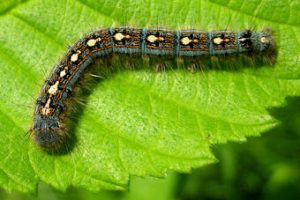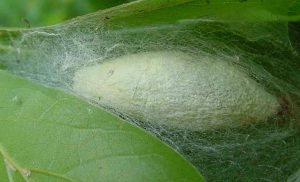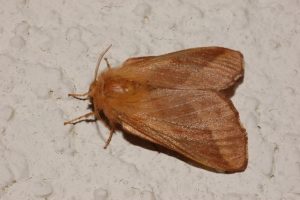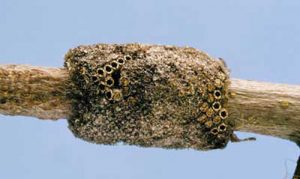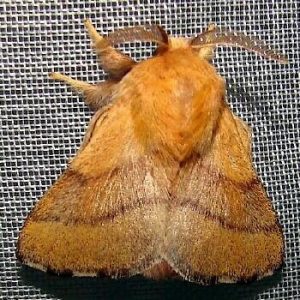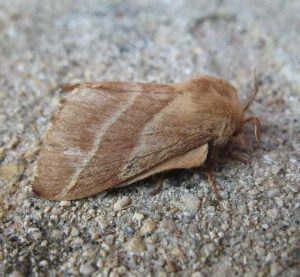Forest Tent Caterpillar Moth (Malacosoma disstria)
Forest tent caterpillar moth, widely distributed throughout North America, is a part of the snout moth family. Despite the name, it does not build a tent, like other tent caterpillar species. Instead, the larvae are known to make silken sheets where they stay together during the molting phase.
en.wikipedia.org
Scientific Classification
- Family: Lasiocampidae
- Genus: Malacosoma
- Scientific Name: Malacosoma disstria
Description and Identification
Caterpillar
They have a brownish-black, grayish or completely black body with pale blue and broken yellow stripes running down longitudinally on each side. Each of the abdominal segments also has a white spot of the size of a keyhole. The forest tent caterpillar larvae also have a white hairy body, with the matured ones growing to 5 – 6.5 cm long. A single egg mass results in 50 – 200 larvae at a time and they mostly move along in a colony throughout this period. The silken sheets they make have pheromones that serve as social cues, helping them move around with ease. Their primary food source includes shrubs as well as deciduous trees.
Pupa
Pupation will happen after the larvae can attain a considerable size achieved with ease when they move along in groups. The cocoons where the pupa remains encased lie amongst shrubs, bark crevices, and webbed leaves. The entire phase takes about 10 – 14 days, after which the adult moths emerge.
Adult Moth
Sexual Dimorphism: Present
The females appear larger, having broader wings than the males.
Color and Appearance
Forewings: When opened, it is dark brown or tan with a thin dark band running through the center. When closed there is no change in the pattern or markings.
Hindwings: When opened, they have a pale brown coloration,and when closed it is all the more the same.
They are thick and short with a hairy appearance and feathery antennae.
Average Wingspan: 3 – 7 cm
Flight Pattern: Consistent and uniform
Season: June – August
Quick Facts
| Distribution | Throughout North America, touching parts of Canada (northern Ontario), Vermont, and Ontario |
| Habitat | Forests, parks, or even backyard hardwood trees grow |
| Predators | Birds, ants, wasps, vespid, parasitic wasp, yellow jacket wasp |
| Lifespan of Adults | 10 – 12 days |
| Host Plants | Alder, aspen, birch, cherry, oak, maple, basswood, sweetgum, tupelo |
| Adult Diet | Do not feed (due to their short lifespan and siphoning mouthparts suited for only sucking nectar) |
Did You Know
- They are known to be a nuisance to the trees since they consume the entire foliage. That may cause significant harm to the trees as the new leaves would grow again but may make it look unattractive. However, heavy infestation for 2 -3 years though rare, could bring down the tree’s mortality rate.
- Since this species does not get a sufficient amount of heat from their body; they rely on their surroundings to keep themselves warm. Hence, by living in groups, they can bask together in sunlight, which helps them survive well.
Scientific Classification
- Family: Lasiocampidae
- Genus: Malacosoma
- Scientific Name: Malacosoma disstria


